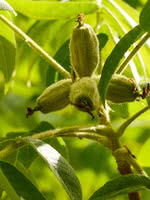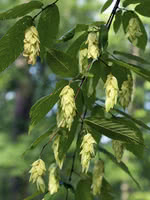Mon-Fri 9am - 5pm Mountain time
Butternut (White Walnut) vs Ironwood Tree
Juglans cinerea
Ostrya virginiana
NOT AVAILABLE THIS SEASON - MIGHT RETURN
Butternut is one of the few walnut varieties native to Canada. The nuts are sought after for their mild, sweet, and oily taste. Ensure this tree is planted in full sun and well-drained soil for best results.
Butternut is self-fertile but it has better yields when planted near other butternuts. It can survive in zone 2, but reliably produces nuts in zone 3.
A top CO2 absorbing species. Experts think this tree may help climate change more than others.
Ironwood Tree is one of the strongest and most resilient trees you will find in North America. In fact, it has the hardest and most dense wood of any North American tree. Prized for its oval shaped canopy and showy winter trunk, this striking shade tree will make a beautiful addition to any yard. Make sure you do not plant near roads as it is highly salt sensitive.

